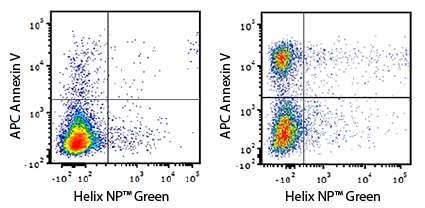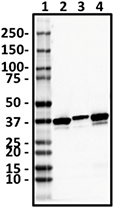Revolutionize Apoptosis Detection with Apotracker™
Apotracker™ is a family of fluorogenic probes that detects externalized phosphatidylserine (PS) residues on apoptotic cells in a calcium-independent manner. Traditional apoptosis detection probes, such as Annexin V, require the presence of calcium, which can affect cell viability and marker expression. Apotracker exhibits a linear relationship with Annexin V staining and does not require a specialized buffer. It can also be useful for microscopy assays where it presents less background staining than traditional probes.

 Login / Register
Login / Register 








Follow Us